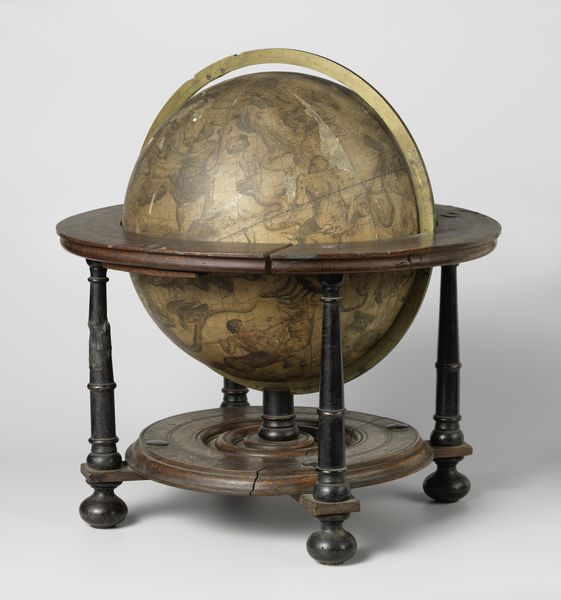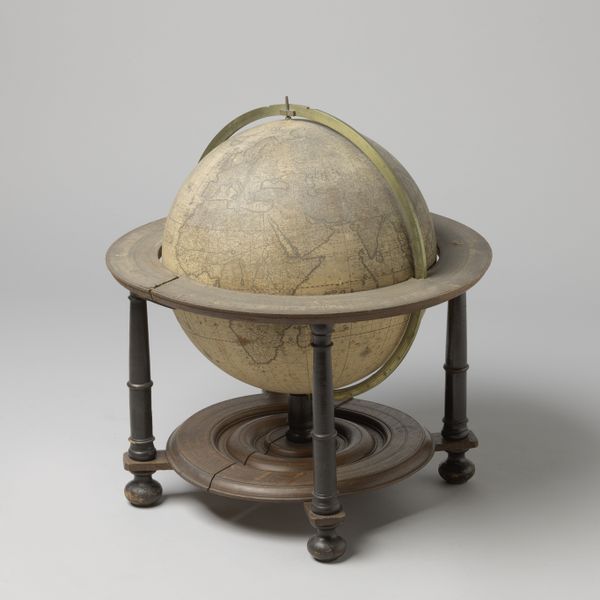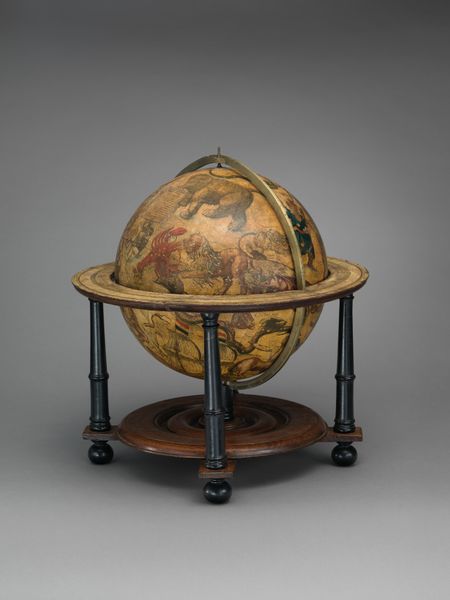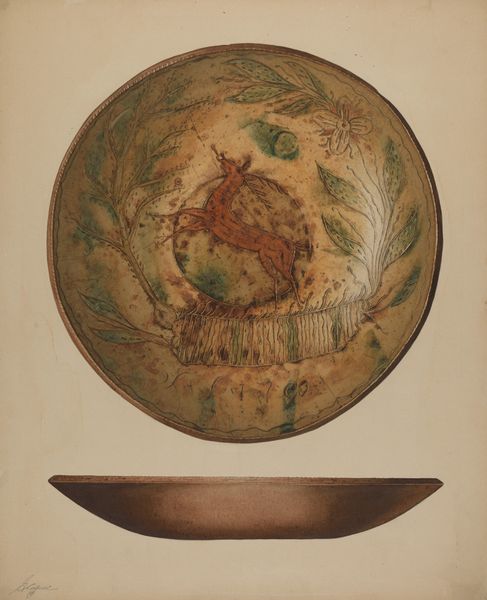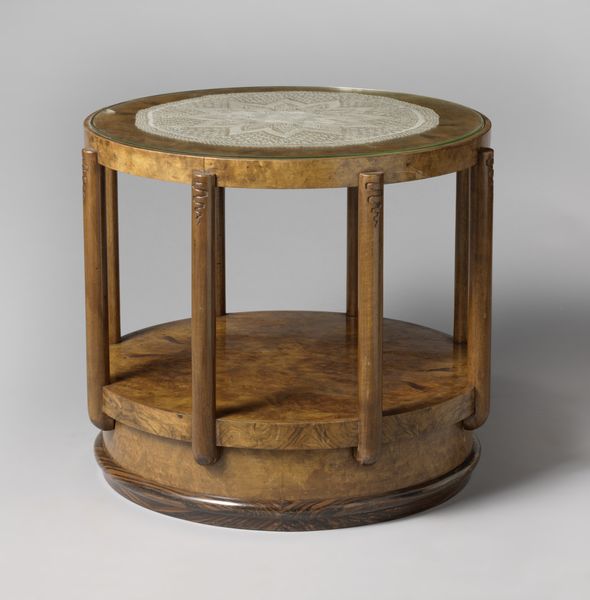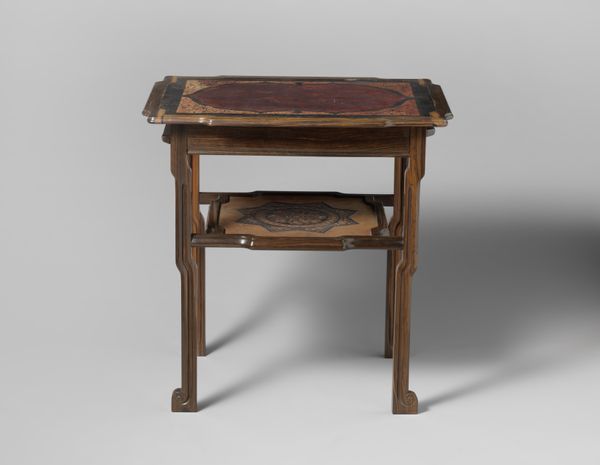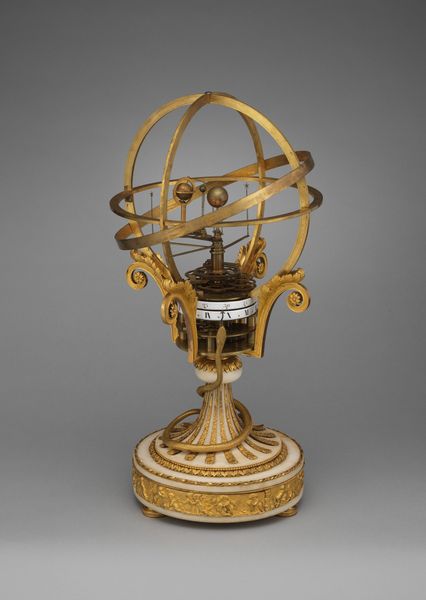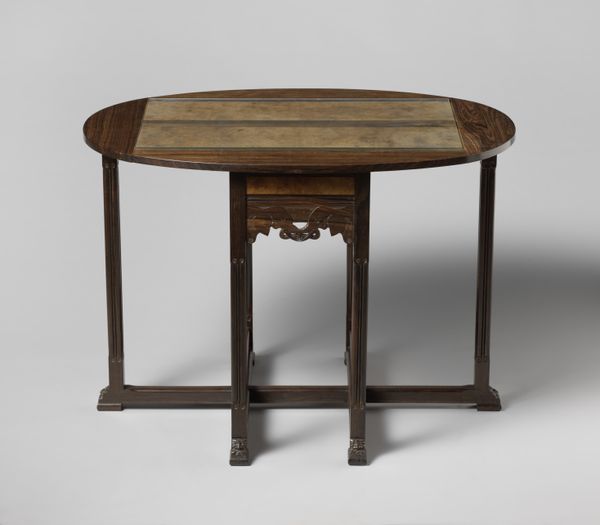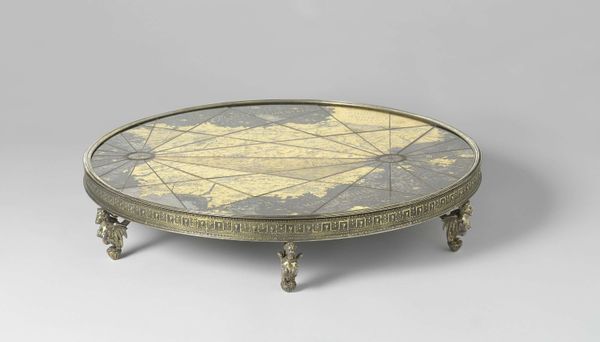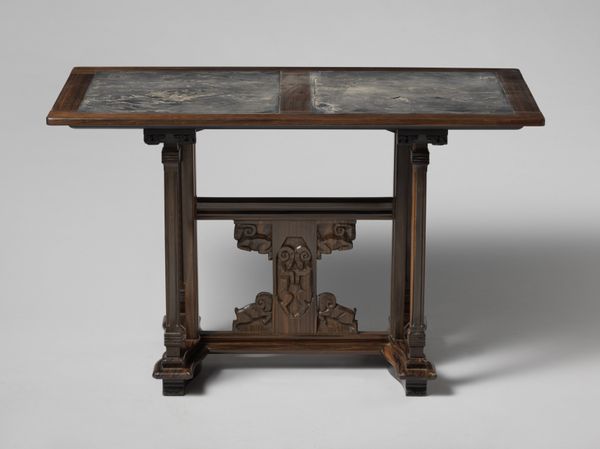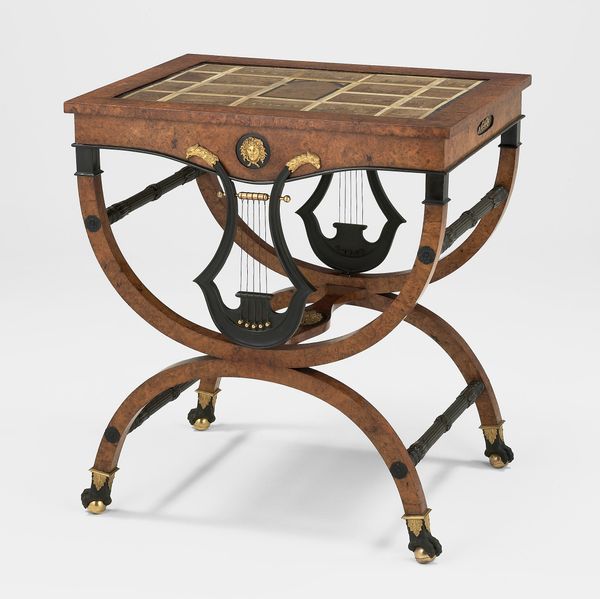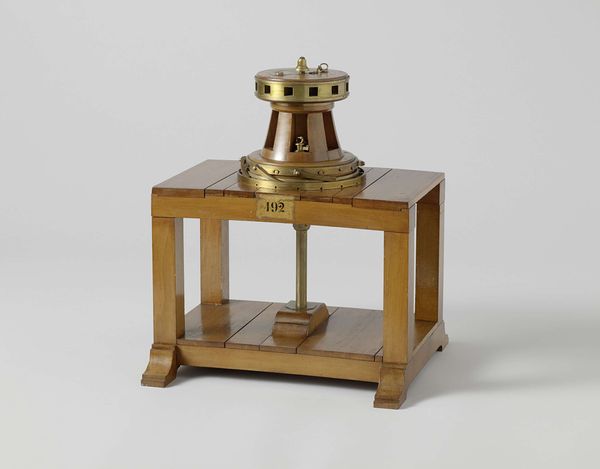
wood
neoclacissism
geometric
wood
history-painting
Dimensions: diameter 32 cm, height 37.5 cm, height 56 cm
Copyright: Rijks Museum: Open Domain
Editor: Here we have "Aardglobe in stoel" by Johann Georg Klinger, made in 1792 out of wood. It's essentially a globe on a stand. I’m immediately drawn to the contrast between the geometric precision of the stand and the spherical form of the globe itself. What significance do you see in a piece like this, given its time? Curator: That's an insightful observation. Globes during this period weren't just geographical tools. The late 18th century was marked by colonial expansion and scientific exploration. Globes like this one were symbols of power, knowledge, and a European-centric worldview. How do you think this object would be perceived differently if it were displayed outside of Europe? Editor: Interesting point! Displaying it outside Europe would completely change its meaning. The globe, initially representing knowledge and power for Europeans, could then be viewed as a symbol of colonial history and potential oppression. It highlights how the object’s location and context affects interpretation. Curator: Precisely. The stand itself reflects the Neoclassical style, known for its order and symmetry. How does the rigid structure of the stand contribute to the overall message of the piece? Editor: The stand reinforces this idea of imposed order. The Neoclassical stand reflects a need to control and classify, even the world itself. This perfectly supports the ambition of the ruling class during that time. Curator: And what is the function of putting the globe in a ‘stoel,’ or chair, as the title translates? Editor: It elevates the globe almost to the level of a ruler. The "chair" symbolizes authority and prestige, emphasizing Europe's view of itself as the center of the world. Seeing it this way really shifts my perception. Curator: Absolutely. Context transforms our interpretation. Remembering how power structures influenced even everyday objects is vital for understanding the period. Editor: I agree, it shows that every object has a cultural imprint and this globe clearly projects its own vision of a specific historical context.
Comments
No comments
Be the first to comment and join the conversation on the ultimate creative platform.
